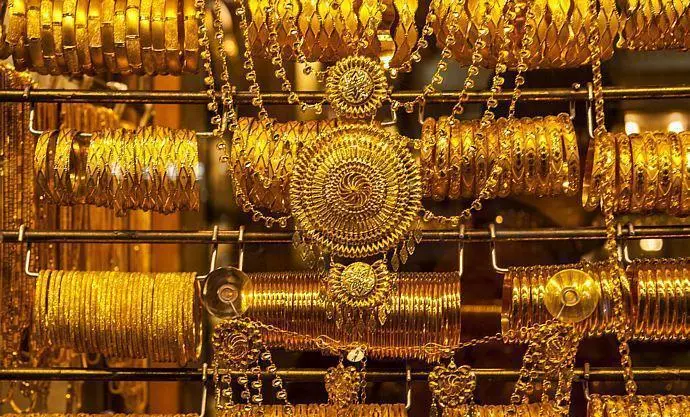There are many ways to identify the authenticity of gold. The most common way we see it on TV is to bite with our teeth. This method damages the appearance of gold jewelry and is unhygienic. Here I will share with you some more reliable identification techniques.

Common identification methods
- look at the color, The old jargon handed down from the pawn shop "seven greens, eight yellows, nine five reds, yellow and white with gray and half gold" describes the purity of gold. If the color is blue and white, the purity is not high, and if the color is red and yellow, the purity is high. For long-term gold jewelry, there is a saying that "copper turns green, silver turns black, and gold never changes color".
- Hardness Testing, The purer the gold, the softer it is. For pure gold, you can leave obvious tooth marks with your teeth, even with your fingernails. Use this method with caution, because if it is covered with gold and the inside is aluminum, then you can pay attention, and you can use a sharp pen tip to test.
- Fire test, Pure gold will not change color after quenching and cooling after burning red, and still maintains the luster of gold. Adulterated or low-purity gold will turn black and purple to varying degrees, and lose its original color and brightness.
- Ceramic scratch test, Use ceramics to scratch your gold product. If it is black scratches, it means that your product is not gold. If it is golden scratches, it proves that your product is gold.
- Bending test, More than 97% of fineness gold jewelry, after bending two or three times, wrinkles appear at the bend, also called fish scale pattern; about 95% of fineness gold jewelry feels hard when bent, and the fish scale pattern is not obvious; about 90% of fineness gold Jewelry is very hard when bent and has no fish scale pattern; gold jewelry with more impurities will break after bending two or three times; if it is made of raw gold, it will break when bent, and the cross section has obvious sand grain shape.
Professional identification method
- Touchstone identification, Use the gold whose fineness has been determined and the jewelry to be tested to grind on the touchstone, and compare the colors to determine the fineness of the gold jewelry. This method should be carried out under natural light and fluorescent lamps, not under direct sunlight and incandescent lamps. Touchstone is a mixture of black minerals such as carbonaceous quartz and opal. If you draw a stripe of gold on the touchstone, you can see the approximate fineness of the gold.
Pure gold: shiny dark yellow, strong yellow; silver-containing gold: light-colored microstrip green; gold containing more than 25% silver: earthy white; copper-containing gold: darker in color, with a reddish hue; silver-containing copper Gold: yellow; gold containing zinc, nickel, and nickel: platinum.
- Chemical Reagent Identification, Grind out the identified jewelry and the contrasting gold on the touchstone, and test the nitric acid on the gold road with a glass rod. Because the chemical properties of the gold element are stable and do not react with the acid, the color does not change. If it is not gold or pure gold, the golden way will disappear or change. The law of change is "three fast and three slow", that is, those with low fineness disappear quickly, and those with high fineness disappear slowly; mixed gold disappears quickly, clear gold disappears slowly; large mixed gold disappears quickly, and small mixed gold disappears slowly. Depending on the disappearance of its golden way, comparison and comparison can determine the fineness of gold jewelry.
- Melt test, This is also a method of identification using the inherent melting point of the metal. We know that adulterated and counterfeit gold are all alloys (18K gold is also an alloy). The physical characteristics of the alloy are that the hardness is greater than any one component, and the melting point is lower than any one component. At normal temperature, the melting point of gold is 1064.43°C, that is to say, the constant temperature furnace is heated to this temperature to test the sample. Anything lower than this temperature or higher than this temperature test can be melted is not real pure gold.
- Density identification, Each metal has its own inherent physical properties. At room temperature, the density of pure gold is 19.32g/cc. That is to say, it is not pure gold that deviates significantly from this density value through professional secret testing.
